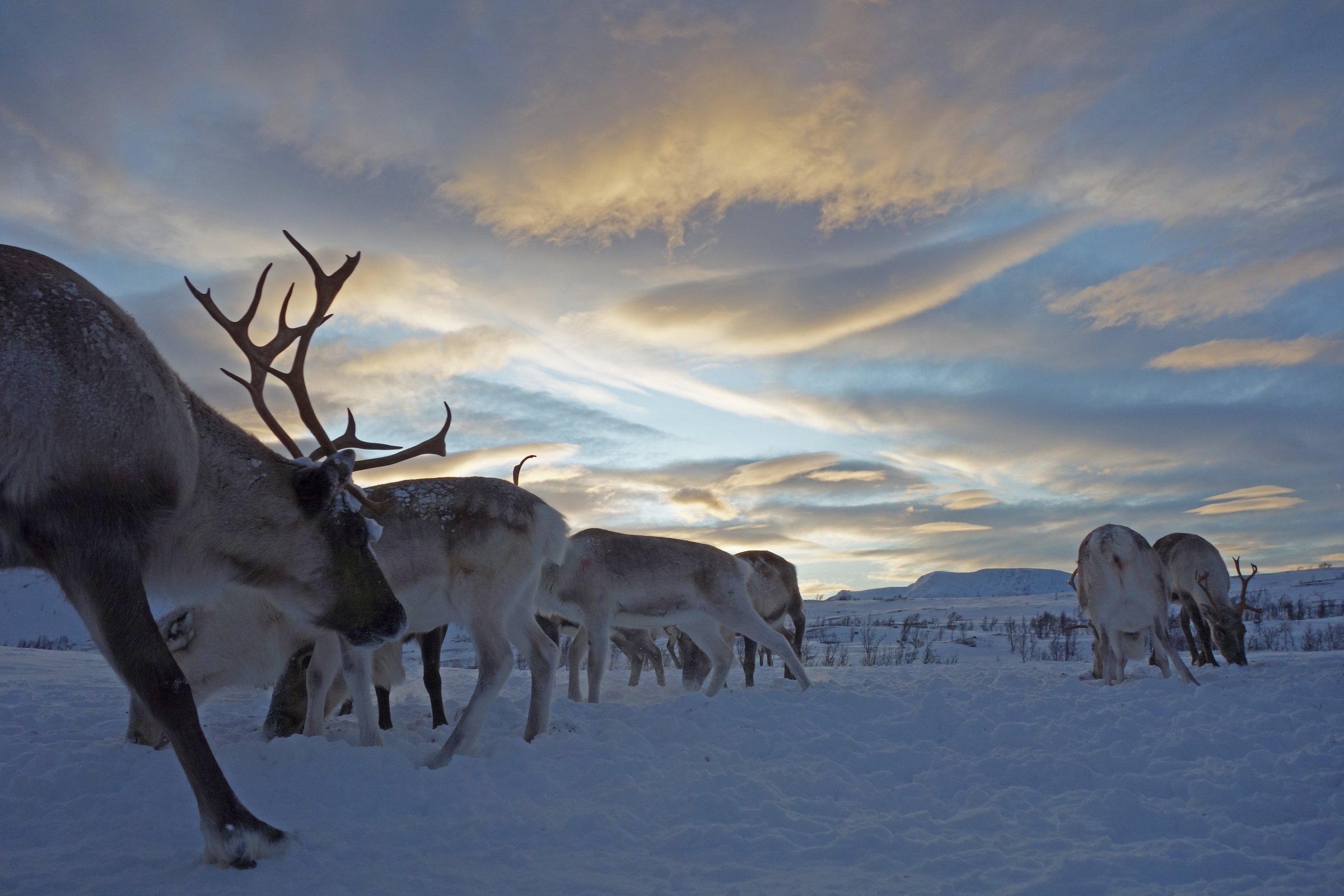
Climate change is impacting the amount of food available for reindeer on a chain of islands near the North Pole. Because of the diminishing amount of food available, scientists say the average weight of reindeer on Svalbard, located just north of Norway, has dropped from 55kg, or 121 lbs, to 48kg, or 106 lbs.
The Guardian reports the reindeer are losing access to plants because warmer winter temps mean less snowfall. Without snow, the precipitation that falls is often rain which eventually freezes the ground; the ice sheets serve as a barrier between the reindeer and their food. The changes in temperature also mean reindeer have more food in the warmer months, a change that has led to a population boom. So while the reindeer are smaller, there are more of them.
“Warmer summers are great for reindeer but winters are getting increasingly tough,” the Guardian reports Professor Steve Albon, an who led the reindeer study in conjunction with Norwegian researchers, said. “So far we have more but smaller reindeer.”
The Christian Science Monitor reports the past decade has been hard on the reindeer population. In 2006 and 2013, the Monitor says, over 80,000 reindeer died of starvation linked to warm winters.
[Guardian]
More Must-Reads from TIME
- Inside Elon Musk’s War on Washington
- Meet the 2025 Women of the Year
- Why Do More Young Adults Have Cancer?
- Colman Domingo Leads With Radical Love
- 11 New Books to Read in Februar
- How to Get Better at Doing Things Alone
- Cecily Strong on Goober the Clown
- Column: The Rise of America’s Broligarchy
Contact us at letters@time.com